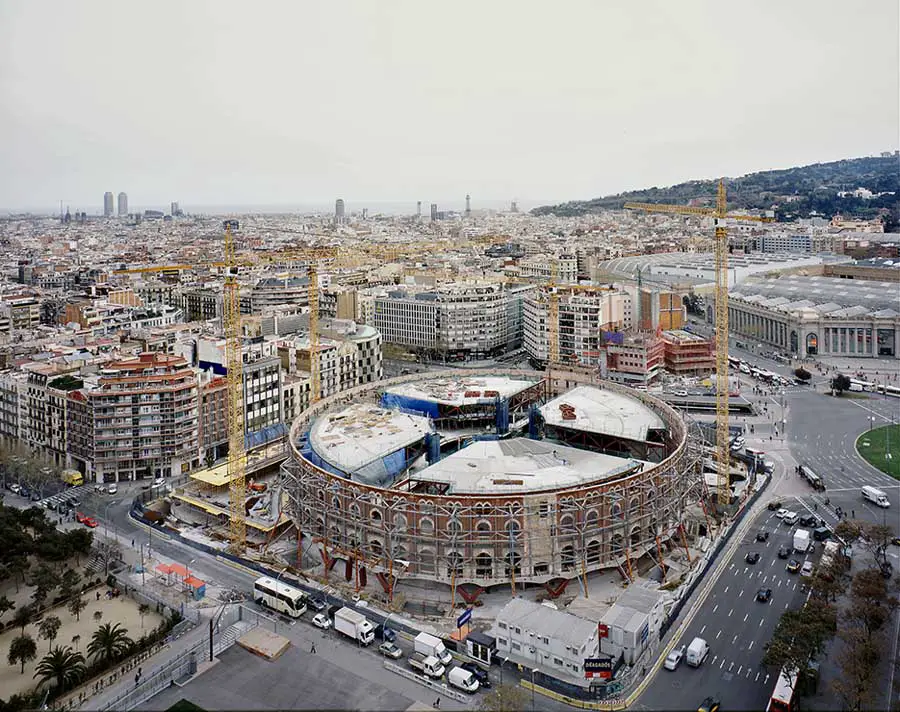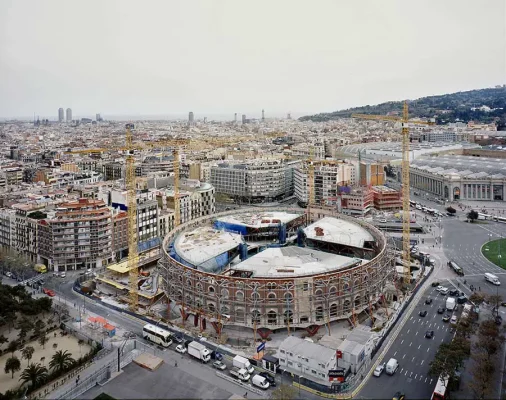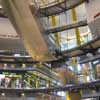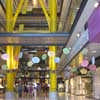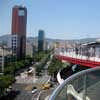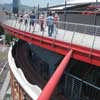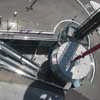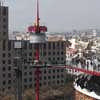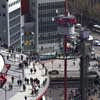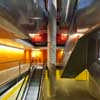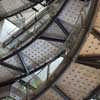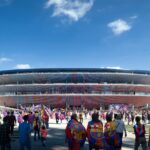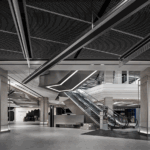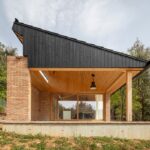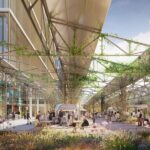Las Arenas Barcelona Mall, Catalan shopping centre, Former Bull Ring building, Spanish city retail
Las Arenas Shopping Center Barcelona
Retail Center Catalonia design by Rogers Stirk Harbour + Partners
post updated 10 May 2024
Location: Plaça d’Espanya
Date built: 2011
Design: Rogers Stirk Harbour + Partners
Las Arenas Shopping Center Building
page updated 20 Jul 2016 ; 4 Apr 2011
Las Arenas Barcelona Award
In addition, there are two fully-glazed external lifts on Carrer de Llançà at the entrance to the Eforum office building and two panoramic passenger lifts (partially glazed) on the outside of the telecommunications tower facing Plaça d’Espanya. This tower reinforces the presence of the bullring and – at its base – provides direct access from the metro station Espanya to the building. The multi-functional area within the dome and the restaurants around its perimeter can be accessed from this elevated public space.
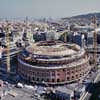


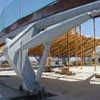
photographs : Rogers Stirk Harbour + Partners
Equally important is the resolution of the ground plane surrounding the bullring, where new plazas are created to provide connections with the existing metro station and neighbouring Parc Joan Miró. In addition, the development links strongly to the nearby Fira de Barcelona – a key European business exhibition venue attracting 3.5 million visitors annually – and the neighbouring districts of Eixample and Sants-Montjuic, one of Barcelona’s fastest-growing and most dynamic areas.
The roof and the giant dish are supported on huge pylons, with services and circulation, such as escalators and stairways, accommodated in the cruciform-shaped zone, defined by the four raked pylon structures.
The design is based on a series of separate and complementary structural systems which allows a variety of activities and user requirements to take place on different levels inside the building. The dish supports the cupola/dome, creating an open and flexible space. Its columns travel down to ground level within the four atria; bridges, lifts, escalators and walkways either pass through these columns or on either side of them. This also allows for an open, column-free space at level 4 and removes the need for any structural members to pass through the cinema spaces below at levels 2 and 3. These cinema spaces are formed by large steel cantilevered boxes that effectively constitute a separate, self-contained structural system within the building and rest on a concrete base at level 2.
Las Arenas : main page on this major Catalan retail development
From level 2 downwards, a more conventional concrete column and floor slab construction has been used for the retail areas. The design of the column layout has provided the spaces required by the client for different retail zones; these columns continue into the four levels of car park below, creating a logical layout for vehicle access and parking.
Additional, separate structural systems support the existing façade of the historic bullring (providing maintenance, fire escape, services and access gantries) and the adjacent Eforum, which connects with the retail at ground level and also with the car park and basement ramps. Between the bullring façade and the Eforum is a services spine and large goods lifts, with other services for the bullring complex placed on the roof of the Eforum.
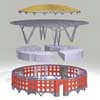
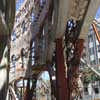
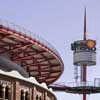
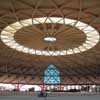
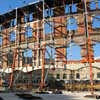
pictures : Rogers Stirk Harbour + Partners
The roof dome is finished with a plastic coating which helps to reduce glare from reflected sunlight. The relatively shallow dome rises only ten metres from its perimeter to the centre. While this geometry is structurally challenging, with its susceptibility to buckling and large deflections, the dimensions were non-negotiable, having to keep within an envelope agreed during the initial planning consent. The maximum crown height was fixed to reduce the visual impact of the roof from a nearby historic fountain.
Several structural options were researched for the roof with the preferred solution being a lamella structure in which the timber members form a pattern of lozenges creating a grid-shell of timber. This works by having simple, repetitive short lengths of timber glu-lam beams, made of fir and joined together to form the dome. The pattern changes at the crown where the structure terminates in a circular ring beam, defining a 30 metre-diameter oculus constructed from a simplified pattern of glu-lam members. The primary members of the dome are connected invisibly.
As a result, even though they are bolted together, all of the metal is hidden within the wood so that observers beneath the dome will perceive only a continuous timber structure. The laminated beams are topped with two layers of plywood – ‘Kerto’ panels which aid structural stiffness – and a layer of insulation, topped with a seamless liquid application roofing system for a weather-proof finish.
The entire roof sits on a three-metre-high ‘skirt’ to overcome the possibility of unusable low space at the perimeter of the dome. The skirt is comprised of 20 boomerang-shaped columns supporting the dome’s perimeter beam. Inclined struts spring from these columns to directly support the ring beam where it meets the timber grid-shell, while providing stability to the entire structure. This approach not only provides a visual contrast with the steel used to construct the dish, but has the environmental advantage of being a sustainable and renewable natural resource. The choice of timber also meant that the structure could be exposed to dramatic visual effect, as fire performance is achieved by sacrificing charring layers.
All the constituent parts – the façade, the roof-level spaces, the four internal segments and the adjacent Eforum – are structurally independent, allowing for future flexibility and change to encourage a wide variety and rotation of activities, including sports events, fashion shows and exhibitions.
“Our design includes a new leisure and retail development within the façade, as well as a completely new, adjacent office building which responds to the city’s historic street pattern. The project has also created significant areas of public realm both in the new dome structure – with its 360-degree roof terrace rising above the existing wall – and at the surrounding street level, which will help to revitalise this part of Barcelona.”
Richard Rogers
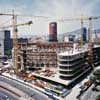

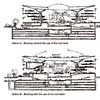
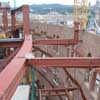
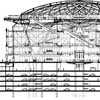
photographs : Rogers Stirk Harbour + Partners
Las Arenas Barcelona : Building Information
Architect: Rogers Stirk Harbour + Partners
Co-Architect: Alonso Balaguer y Arquitectos Asociados
Structural engineers and existing façade consultants: Expedition Engineering
Structural engineers and existing façade consultants: BOMA
Services engineers and acoustic consultants: BDSP
Services engineers: JG Ingenieros
Quantity surveyor: Tecnics G3
Project & construction manager: Bovis Lend Lease
Main contractor: Dragados
Las Arenas Barcelona information from Rogers Stirk Harbour + Partners
Rogers Stirk Harbour + Partners
Las Arenas Barcelona : one of 9 RIBA Award buildings in the European Union 5 Sep 2011
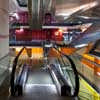
Location: Plaça d’Espanya, Barcelona, Catalunya, North East Spain, south western Europe
Barcelona Architectural Designs
Barcelona Architectural Designs – latest buildings
Barcelona Architecture Walking Tours
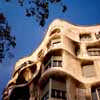
picture © Adrian Welch
Barcelona Architecture
Comments / photos for the Las Arenas Shopping Center Barcelona – Catalan Retail Redevelopment design by Rogers Stirk Harbour + Partners page welcome

